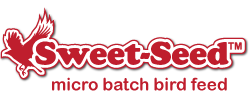Flowers That Will Not Attract Hummingbirds

Every birder knows a surefire way to attract hummingbirds is with bright, lush flowerbeds, but you can have a yard filled with a rainbow of fantastic flowers and hummingbirds won’t give it a second glance if you’ve planted all the wrong blooms. Understanding what types of flowers most appeal to hummingbirds can help you recognize what popular blooms you should remove from your yard in order to attract more hummers.
What Hummingbirds Don’t Like
Hummingbirds have evolved their thin, needle-like bills for sipping nectar from specific flower shapes – those with long, tubular blooms that create a well of nectar deep within the flower. Blooms that are more bulbous, puff-like, or bowl-shaped are less favored by hummingbirds, as are those with short but flat blooms that won’t collect as much nectar. Since hummingbirds typically hover while they feed, flowers in dense, overhanging bunches or with low growth habits without hovering room can’t be easily visited by hummingbirds. Very early- and late-blooming flowers may also be bad for hummingbirds if they reach their floral peak before spring hummingbird migration or after hummingbirds leave in the autumn, since these flowers won’t be producing nectar when hummingbirds are in the area and need the food source. Finally, non-native flowers aren’t as easily recognized by hummingbirds and won’t be popular or productive for a hummingbird garden.
Top 10 Flowers That Are Bad for Hummingbirds
Many of the most common, popular, and widespread flowers in landscapes and gardens are actually some of the worst for hummingbirds and do not meet the birds’ needs for food, shelter, and nesting sites. Familiar flowers that aren’t hummingbird-friendly include:
- Crocuses – Bloom too early for hummingbirds
- Daffodils – Bloom too early for hummingbirds
- Gardenias – Non-native flower with little or no nectar
- Irises – Poor shape for hummingbird bills
- Lilacs – Produce very little or no nectar
- Lily of the Valley – Low bloom with no hovering room
- Marigolds – Poor shape for hummingbird bills, little nectar
- Peonies – Poor shape for hummingbird bills, little nectar
- Roses – Poor shape for hummingbird bills, little or no nectar
- Tulips – Bloom too early for hummingbirds
While some cultivars of these flowers may be friendlier to hummingbirds than others, none of them are ideal options for attracting hummingbirds.
How Any Flower Can Still Help Hummingbirds
Even flowers that are not the best choice for a hummingbird garden, however, can still be useful in a hummingbird-friendly yard. All flowers, even those that don’t directly feed hummingbirds as a rich source of nectar, can still provide…
- Bright colors, including red and pink shades, to attract curious hummingbirds
- Aromas that attract small insects, such as gnats and spiders, that hummingbirds will eat
- Perches adjacent to more nectar-rich flowers, feeders, or hummingbird feeding areas
- Nesting areas, particularly if the foliage is dense and thorny to protect hummingbirds
By providing more than just nectar, a yard will be even better for hummingbirds and more of these flying jewels will happily visit.
Removing Unfavorable Flowers
If your yard already has well-established flowers that aren’t ideal for hummingbirds, you can either choose to tear out less-useful blooms or augment flowerbeds by filling in gaps, expanding borders, or replacing old plants with more hummingbird-friendly options as necessary. Bee balm, salvia, zinnias, butterfly bush, and petunias are all great options hummingbirds will love, and each one produces generous amounts of nectar for the big appetites of these tiny birds. Another option is to add potted flowers to your deck, patio, or porch, or you could add an arbor or trellis to support a hummingbird-friendly flowering vine, such as trumpet creeper, figwort, or passionflower. As you gradually replace less productive flowers with better options for hummingbirds, you will see even more hummers take notice and visit your yard for food, shelter, and nesting sites.
